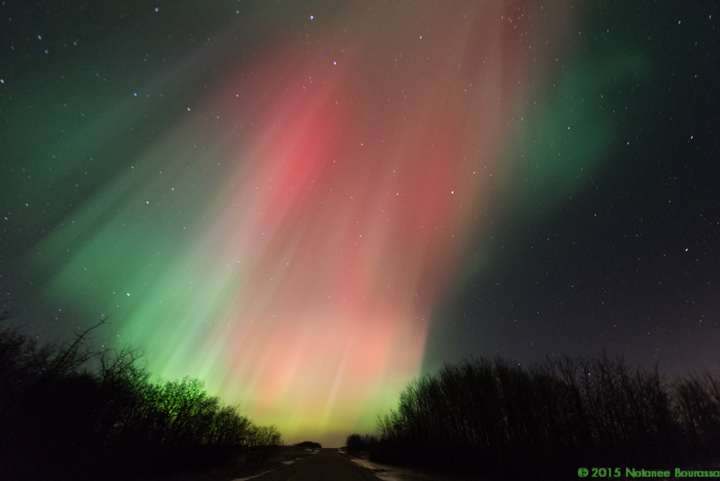TORONTO – The sun unleashed one of the strongest solar flares in more than two months this week and it could produce some effects here at home.

Solar flares, which erupt from sunspots, are categorized from the weakest to strongest using the letters C, M and X. Thursday’s flare was an M3.
READ MORE: How solar storms could leave us in the dark
The flare caused a brief shortwave radio blackout. But it also produced a coronal mass ejection (CME). CMEs are responsible for giving us the northern lights.
Northern lights, called aurora borealis, occur when particles released in a CME interact with Earth’s magnetic field. They’re typically relegated to the far north, but if the auroral oval (a donut-shaped hole) tips south, the particles travel allowing the northern lights to be visible further south. (Of course, reverse all this if you live in the southern hemisphere where you get southern lights or the aurora australis).
Northern Lights – Feb 19 & 20, 2014 from Richard Gottardo on Vimeo.
The CME is estimated to arrive on June 21 or 22.
READ MORE: Why do we get the northern lights?
But keep an eye on the night sky: sometimes these things can arrive either earlier or later than predicted.
And some handy tips on viewing the northern lights:
- Get to the darkest area you can
- Look north
- If you can’t see anything, try taking a long-exposure of the northern horizon — anywhere from 10 to 15 seconds — with a high ISO (use a tripod)
- Check here for aurora forecasts
And stay tuned for updates: the giant sunspot AR2371 — responsible for the flare — is turning towards Earth. The Space Weather Prediction Center is calling for a 70 per cent chance of more M-class solar flares and a 15 per cent chance of X-class flares.



Comments